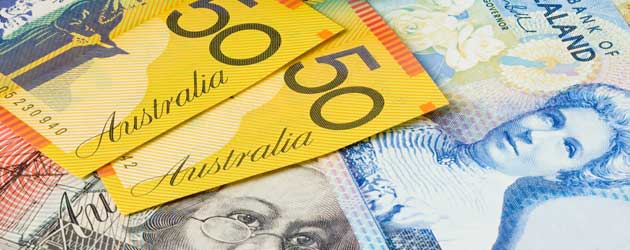
The Pound performed fairly badly on Friday as soft domestic data and a below-forecast US Non-farm Payrolls report combined to leave Sterling weaker against the Australian Dollar and the New Zealand Dollar.
Sterling started the day anemically as both Industrial Production and Manufacturing Production, which were both predicted to improve by 0.4%, printed at 0.0% for November. Additionally, it was reported that Construction output declined by a worrying -4.0% during November.
With Manufacturing, which accounts for around 10% of the UK economy, stagnating and Construction, which makes up around 6%, contracting in November it is possible that the UK economy did not expand by as much as initially thought during the fourth quarter. Some analysts predict that growth slowed from 0.8% to 0.5%, but it is more probable that Q4 GDP will come in around the 0.9% mark.
The Pound slid across the board in reaction to the disappointing trio of ecostats as investors pared back their rate hike projections.
Sterling’s losses against the ‘Aussie’ and the ‘Kiwi’ accelerated during the afternoon when it was reported that US employers only added 74,000 new names to their books. The shockingly bad result came in massively lower than the 197,000 that economists’ had expected, which caused a bit of a stir in financial markets as traders looked to readjust a plethora of positions.
The Pound fell by just over -1.5 cents against both the New Zealand Dollar (GBP/NZD) and the Australian Dollar (GBP/AUD) as investors saw a reduced likelihood that the Federal Reserve will taper asset purchases again this month.
The Fed cut its QE3 programme by -$10 billion to $75 billion per month during December, but recent communications from the Central Bank suggest that the quantitative easing programme is not on a pre-set course. In other words, the Fed will only be cutting back on stimulus if economic conditions are seen to be improving.
With a January taper looking less likely, traders took the opportunity to buy into the risk-sensitive Australian and New Zealand Dollars.
Although the Pound lost out to the Antipodeans, Sterling fared better against the US Dollar and GBP/USD rallied by just under a cent in the immediate aftermath of the results.
As we enter this week’s session the most important economic release to look out for is Tuesday’s UK Consumer Price Index. The headline barometer of inflation is predicted to remain at 2.1%, marginally higher than the Bank of England’s 2.0% target.
However, if price pressures begin to slide and CPI falls below 2.0% then it will support the BoE’s policy of keeping interest rates at record lows to foster increased lending in the domestic economy. This is likely to dampen demand for the Pound.
Conversely, with Unemployment levels tumbling surprisingly quickly, a stronger-than-anticipated CPI inflation print could boost rate hike bets and therefore send GBP/AUD and GBP/NZD higher.

Comments are closed.